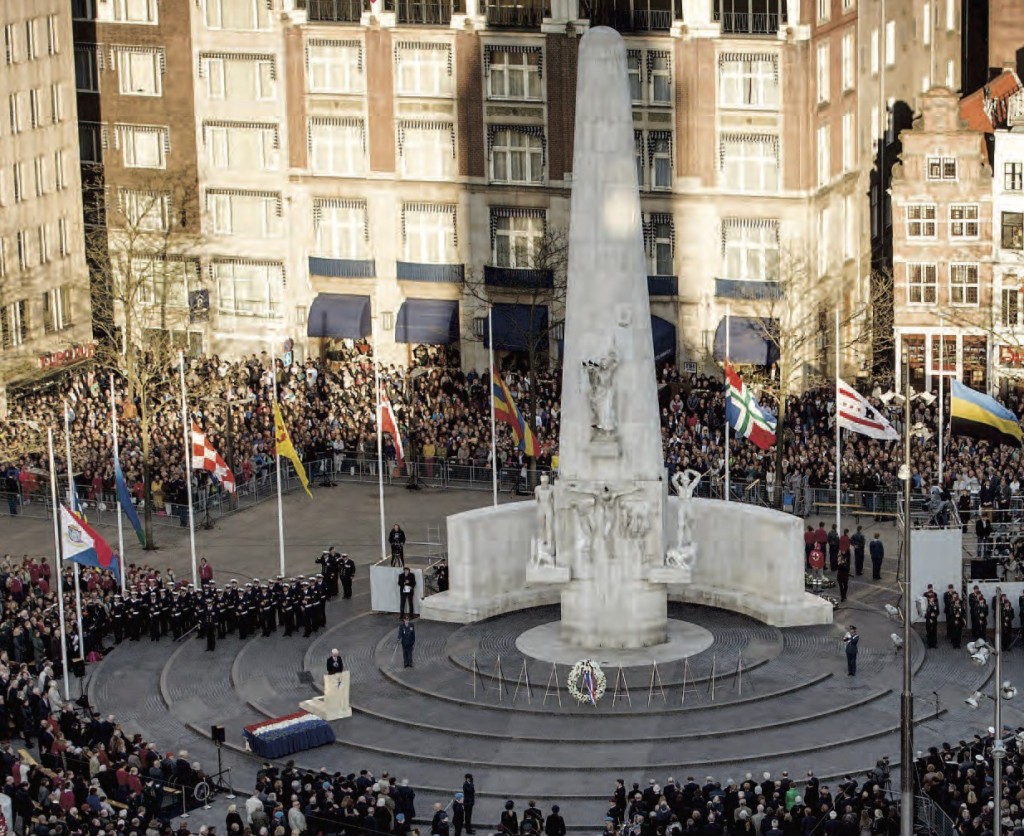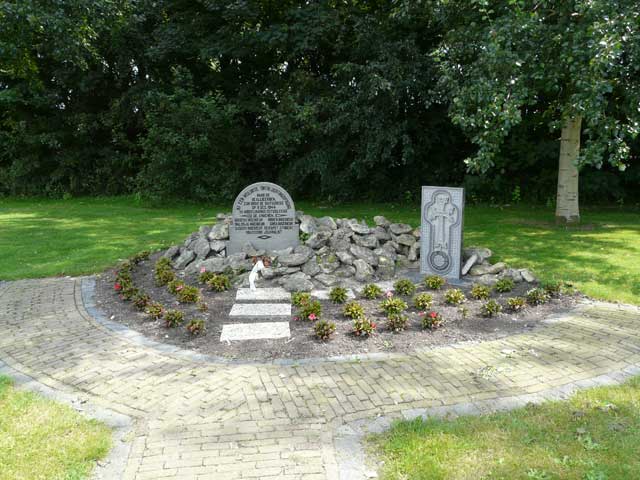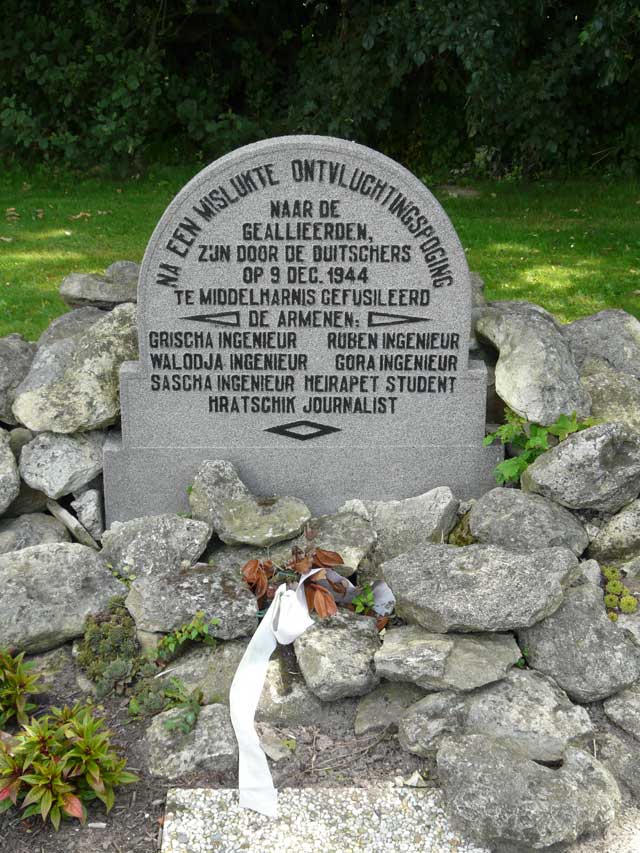
Federatie Armeense Organisaties Nederland • FAON
Website: www.faon.nl
E-mail: info@faon.nl
Federatie Armeense Organisaties bij de Nationale Herdenking in Amsterdam
Den Haag, 3 mei 2016 – Dit jaar zal voor het eerst een delegatie van Armeense organisaties een krans leggen tijdens de Nationale Herdenking van de slachtoffers van de Tweede Wereldoorlog op 4 mei op de Dam in Amsterdam.
De Federatie Armeense Organisaties in Nederland (FAON) wil hiermee de gevallenen gedenken, waaronder ook de duizenden Armeniërs uit het Sovjet-leger, die hier tijdens de Tweede Wereldoorlog als Duitse krijgsgevangen waren verzameld onder de benaming “Armeense bataljons”. Zij lagen vooral op de Zeeuwse en Zuid-Hollandse eilanden.
Tijdens hun verblijf (1943 – 1944) zochten en vonden zij voortdurend aansluiting bij het Nederlands verzet. Velen moesten dit met de dood bekopen. Slechts een gering percentage van deze Armeniërs overleefde de laatste fase van de oorlog.
Deze episode uit de WO II geschiedenis is velen in Nederland bekend vanuit het boek “Volg het spoor terug” van J.B. Charles, alias prof. W.H. Nagel, die autobiografisch schrijft over zijn werk in het Nederlands verzet en daarbij verslag doet van zijn talloze contacten met de Armeniërs van de Armeense bataljons in het verzet. Uitgebreid beschrijft hij ook hun achtergrond en cultuur.
Website: www.faon.nl
E-mail: info@faon.nl
Federation of Armenian Organisations at the National Remembrance Day in Amsterdam
The Hague, 3 May 2016 – This year for the first time a delegation of Armenian organisations will lay a wreath at the Memorial of Dam Square in Amsterdam during the National Remembrance Day of the victims of World War II on 4 May 2016.
The Federation of Armenian Organisations in the Netherlands (FAON) will pay tribute to the victims of the war, including thousands of Armenians from the Soviet army, who were sent to the Netherlands by the Germans as Soviet prisoners of war, under the name of “Armenian battalions”. They were mainly stationed on the islands in provinces Zeeland and South Holland.
During their stay (1943 – 1944) they constantly sought and found contacts with the Dutch resistance. Many of them were therefore shot dead by Germans. Only a small percentage of these Armenians survived the final phase of the WWII.
This episode of history from the WWII are mostly known in the Netherlands from the book “Follow the track back” by J.B. Charles, pseudonym of the criminologist prof. W.H. Nagel, an autobiographical essay about his activity at the Dutch resistance, where he reports about his numerous contacts with the Armenians of the Armenian battalions in the resistance. He also describes extensively the background and culture of the Armenians.
Կայքէջ` www.faon.nl
Էլ. փոստ` info@faon.nl
Հոլանդահայ ֆեդերացիայի մասնակցությունը Համազգային Հիշատակի Օրվա միջոցառմանը Ամստերդամում
Հաագա, 3 մայիսի 2016 թ. – Այս տարի առաջին անգմվա համար հոլանդահայ կազմակերպության պատվիրակությունը ներկա կլինի Ամստերդամում մայիսի 4-ին կայանալիք Երկրորդ համաշխարհային պատերազմի զոհերի ոգեկոչման Համազգային Հիշատակի Օրվա արարողությանը և ծաղկեպսակ կդնի Դամ հրապարակի հուշակոթողին։
Հոլանդահայ կազմակերպությունների ֆեդերացիան (FAON) հարգանքի տուրք կմատուցի պատերազմի զոհերին, այդ թվում հազարավոր հայերին, ովքեր որպես խորհրդային ռազմագերիներ զոհվել են Նիդերլանդներում։ Խորհրդային բանակում ծառայող այդ ռազմագերիներին գերմանացինները Նիդերլանդներ էին ուղարկել Հայկական լեգեոնի «Հայկական գումարտակների» կազմում։ Նրանք հիմնականում տեղակայված են եղել Զելանդիայի և Հարավային Հոլանդիայի մարզերի կղզիներում։
Հոլանդիայում գտնված տարիներին (1943 – 1944), նրանք շարունակ փորձել և հաջողել են կապեր հաստատել հոլանդական դիմադրության հետ։ Այդ իսկ պատճառով Գերմանացիները գնդակահարել են նրանցից շատերին: Այդ հայերից միայն մի փոքր խումբ է վերապրել Երկրորդ աշխարհամարտի եզրափակիչ փուլը։
Երկրորդ համաշխարհային պատերազմի այս դրվագը Նիդերլանդներում հիմնականում լուսաբանված է Յ. Բ. Չարլզի (քրեագետ պրոֆ. Վիլեմ Հենդրիկ Նագելի կեղծանունը) «Հետադարձ հայացք» ինքնակենսագրական գրքում, որտեղ նա նկարագրել է հոլանդական դիմադրական շարժման գործունեությունը և «Հայկական գումարտակի» հայերի բազմաթիվ կապերը դիմադրական շարժման հետ։ Այդ գրքում հեղինակը մանրամասնորեն անդրադարձել է հայերի անցյալին և մշակույթին։

